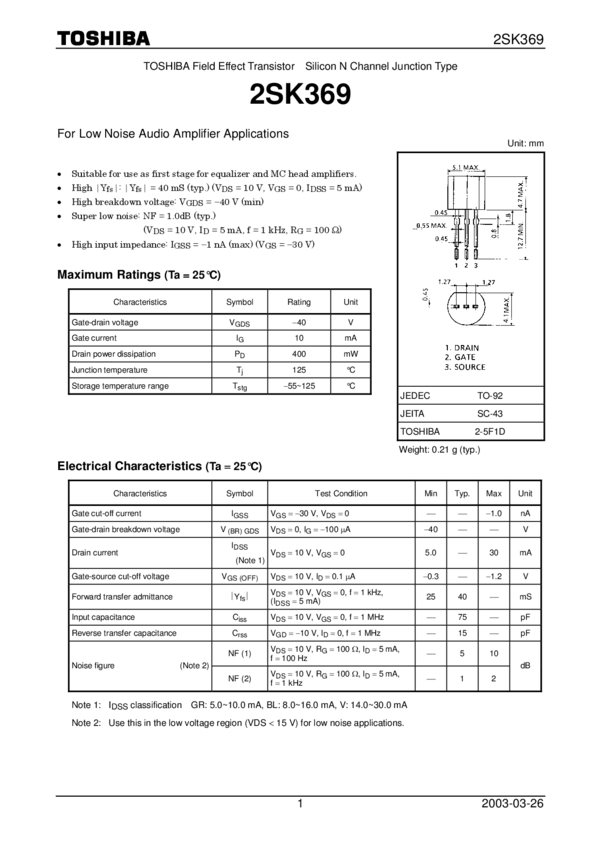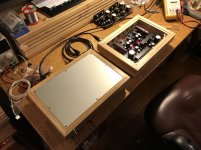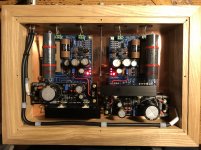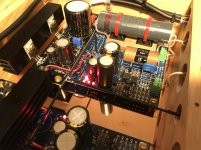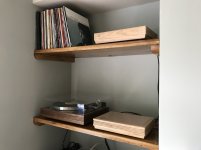okay,
R4, both sides=5V
Q3, both sides reading approx. 2V
2V Q3 Vce? How much Vbe?
10-4
Is there anything that I'm looking for? Matching, output, should I order a bunch to test and pick out the best candidates?
Near Hfe (current gain) between Q3s for the channels if you got a multimeter with hfe mode or a transistor checker. Falling within 5% is alright for this circuit.
It seems then that Q3 is good?
Yes, good. Proceed with the RDS JFET checks.
Salas FSP with BiB 1.3 LV supplies
I just completed a build of the FSP Phono with BiB 1.3 power supplies.
I had bought the PCB's in the December 2018 GB but with lots of projects going on it took me a while to complete this project. However it's done and it sounds great.
I noticed some of the other recent builds used 1.3 LV supplies which is what motivated me to go the 1.3 route rather than use the on board regulator. I did not build the on board regulator so I can't comment on whether there was a noticeable difference between the two.
It's early days (actually hours) for the FSP - it seems to need quite a time to warm up and settle. Perhaps 30 minutes before the TP1-TP2 voltage comes to rest at 3.6 V. But it plays ok after about 5 minutes. I clearly have some work to do managing the temperatures, probably bigger sinks and I've got to drill cooling holes through the copper chassis plates.
My cartridge is the AT Art-9, with its 0.5 mV output I went with dual 2SK369's and the gain seems about right relative to other sources.
For the RIAA I tweaked the values quite a bit as follows:
R14 47.63 kΩ
R5 || R6 6.615 kΩ
C1 48.1 nF
C2 16.5 nF
The above values, I think give a theoretical flat RIAA response. Salas you did mention your circuit description that source impedance and Miller capacitance was accounted for which I have not done. So I may change the values further. My initial remarks after only 5-6 hours of listening though are it's really good no boomy bass or irritating treble. All the caps and resistors are better than 1% matched.
I run a fixed R1 at 510 Ω with a z-foil otherwise Vishay Dale RN's everywhere else. I splashed out a bit on the coupling caps as well.
On the BiB's I have R1 at 4 Ω for 150 mA, which might be a bit generous and the sinks get to +25 C which I can just about manage with the copper chassis lid removed, I'll need to think before I seal it up.
Overall I really enjoyed this build, sourcing the components and the end result is very pleasing (seriously good).
I think I noticed the FSP was not in the the last GB round and perhaps Salas has plans to reinvent it in a slightly different form sometime soon ?
A few pictures below. The PSU is above the Phono chassis, the styling of one of the boxes matches the Linn Sondek it sits next to.
I just completed a build of the FSP Phono with BiB 1.3 power supplies.
I had bought the PCB's in the December 2018 GB but with lots of projects going on it took me a while to complete this project. However it's done and it sounds great.
I noticed some of the other recent builds used 1.3 LV supplies which is what motivated me to go the 1.3 route rather than use the on board regulator. I did not build the on board regulator so I can't comment on whether there was a noticeable difference between the two.
It's early days (actually hours) for the FSP - it seems to need quite a time to warm up and settle. Perhaps 30 minutes before the TP1-TP2 voltage comes to rest at 3.6 V. But it plays ok after about 5 minutes. I clearly have some work to do managing the temperatures, probably bigger sinks and I've got to drill cooling holes through the copper chassis plates.
My cartridge is the AT Art-9, with its 0.5 mV output I went with dual 2SK369's and the gain seems about right relative to other sources.
For the RIAA I tweaked the values quite a bit as follows:
R14 47.63 kΩ
R5 || R6 6.615 kΩ
C1 48.1 nF
C2 16.5 nF
The above values, I think give a theoretical flat RIAA response. Salas you did mention your circuit description that source impedance and Miller capacitance was accounted for which I have not done. So I may change the values further. My initial remarks after only 5-6 hours of listening though are it's really good no boomy bass or irritating treble. All the caps and resistors are better than 1% matched.
I run a fixed R1 at 510 Ω with a z-foil otherwise Vishay Dale RN's everywhere else. I splashed out a bit on the coupling caps as well.
On the BiB's I have R1 at 4 Ω for 150 mA, which might be a bit generous and the sinks get to +25 C which I can just about manage with the copper chassis lid removed, I'll need to think before I seal it up.
Overall I really enjoyed this build, sourcing the components and the end result is very pleasing (seriously good).
I think I noticed the FSP was not in the the last GB round and perhaps Salas has plans to reinvent it in a slightly different form sometime soon ?
A few pictures below. The PSU is above the Phono chassis, the styling of one of the boxes matches the Linn Sondek it sits next to.
Attachments
For the RIAA I tweaked the values quite a bit as follows:
R14 47.63 kΩ
R5 || R6 6.615 kΩ
C1 48.1 nF
C2 16.5 nF
The above values, I think give a theoretical flat RIAA response. Salas you did mention your circuit description that source impedance and Miller capacitance was accounted for which I have not done. So I may change the values further. My initial remarks after only 5-6 hours of listening though are it's really good no boomy bass or irritating treble. All the caps and resistors are better than 1% matched.
Those relative circuit parameters are real and should be taken into account. This Riaa filter network isn't buffered to can ignore such. With your 0.15u interstage coupling capacitor, near absolutely flat response (measured) would ask for:
R14 47k
R5//R6 6.76k
C1 47n
C2//C2y 15.4n
I think I noticed the FSP was not in the the last GB round and perhaps Salas has plans to reinvent it in a slightly different form sometime soon ?
I would like to repackage it with Ubib 1.3 type reg integral at a point. Maybe to also replace the hardwired gain configuration by means of all sensitivities parts values already populated but using pins and jumpers to can easily reconfigure them. You having added 1.3 Ultrabibs already and owning a serious MC cart I guess you wouldn't care for such a repackaging.
Perhaps 30 minutes before the TP1-TP2 voltage comes to rest at 3.6 V. But it plays ok after about 5 minutes. I clearly have some work to do managing the temperatures, probably bigger sinks and I've got to drill cooling holes through the copper chassis plates.
Keep the 1.3's at 150mA CC and ventilate the plates a bit. Or use higher sinks. Are they mechanically supported by just the Mosfets, or its the pictures hiding some other support? No problem as for now but the build probably wouldn't travel well if it must. Vibration brings metal fatigue to overloaded Mosfet pins.
30 minutes to hit TP target but already playing good after 5 minutes is normal enough behavior already though. Dead on 3.6V isn't crucial. Its a center area to be about so R4's signal has ample voltage margin above and below peaks not to slide near one end and hit the stop.
Thank you for the kind words on the build.
I shall get some new components and do some soldering to adjust the RIAA further.
For a future FSP I think an integrated BiB 1.3 would be nice for the next generation of FSP builders. Your idea for adjustable gain without the need for the soldering iron is attractive even for existing users who might have other TT's / carts or friends who have yet to experience this phono amp.
But I was also thinking with the 2SK...'s getting less common, maybe one day a great designer will come up with a design that uses current production FET's. Quite a challenge, maybe you know someone though who could do this
I will run the 1.3's at 150 mA and cool them accordingly and get into the habit of fixing a coffee / whisky while the amp warms up before listening.
Thanks again and I'lll write again once I've tweaked the RIAA.
CV
I shall get some new components and do some soldering to adjust the RIAA further.
For a future FSP I think an integrated BiB 1.3 would be nice for the next generation of FSP builders. Your idea for adjustable gain without the need for the soldering iron is attractive even for existing users who might have other TT's / carts or friends who have yet to experience this phono amp.
But I was also thinking with the 2SK...'s getting less common, maybe one day a great designer will come up with a design that uses current production FET's. Quite a challenge, maybe you know someone though who could do this
I will run the 1.3's at 150 mA and cool them accordingly and get into the habit of fixing a coffee / whisky while the amp warms up before listening.
Thanks again and I'lll write again once I've tweaked the RIAA.
CV
- Home
- Source & Line
- Analogue Source
- Simplistic NJFET RIAA
